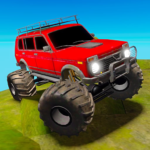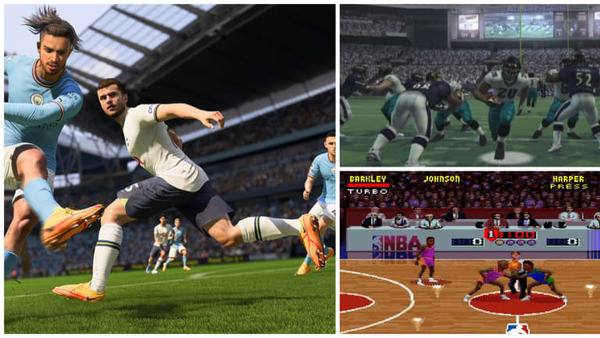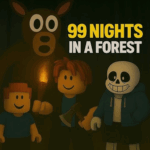Garena Free Fire's Kalahari map, released in March 2021, marked a pivotal moment in the game’s evolution—introducing a distinct desert-themed zone that brought new terrain, playstyles, weapons, and strategies. While prior maps like Bermuda and Purgatory offered lush island or mining settings, Kalahari delivered an open, arid expanse with sand dunes, mining operations, abandoned towns, and long sightlines. This article explores Kalahari in depth, from its design and gameplay dynamics to its impact on competitive play, community adoption, and long-term relevance within Free Fire’s roster. We examine ten thematic chapters covering the map’s evolution, combat mechanics, meta changes, esports integration, and pros and cons—analyzing why Kalahari remains a beloved and strategically rich battleground in Free Fire’s mobile universe.
Origins and Launch of Garena Free Fire: Kalahari
Garena introduced Kalahari in March 2021 as Free Fire’s third main map, following Bermuda and Purgatory. The development team aimed to craft a setting that contrasted sharply with the dense foliage and verticality of previous environments—resulting in an arid, wide-open desert arena. Drawing inspiration from real-world desert mining towns and African geography, Kalahari features open plains, scattered industrial compounds, and the central mining area known as “Kalahari Quarry.” Its launch coincided with an in-game campaign dubbed “Desert of Death,” complete with thematic skins and events. The map was quickly adopted by players seeking long-range engagements and strategic rotations, and soon became a fixture in ranked and casual matchmaking playlists.
Kalahari’s release reflected Garena’s strategy to offer varied map experiences and cater to different combat preferences. With wide sightlines and fewer close-quarters choke points, it rewarded precision, team coordination, and rotate control rather than reckless looting or aggressive juggernaut tactics. The phased rollout across global servers included visual polish, themed vignettes, and performance optimizations for mid-range devices. As a major content update, Kalahari demonstrated Free Fire’s capacity to expand its tactical depth and reinforce its reputation as a mobile battle royale that evolves steadily.
Map Layout and Key Locations of Garena Free Fire: Kalahari
Kalahari is composed of five main drop zones: Quarry, Lapaquet, Centro, Ranchito, and The Dune Fields. Quarry serves as the central hub, a mining complex filled with industrial structures, vehicles, and ricochet-prone terrain. Centro is a small abandoned town with tight buildings for close-range fights. Ranchito comprises villas and amphitheater-like open yards. Lapaquet features dunes and scattered compounds, ideal for sniping. The Dune Fields offer rolling sands with minimal cover for long-range encounters.
Quarry and Centro
Quarry sits at the map’s heart and attracts early-drop squads seeking high loot and intense fights; its elevations and containers offer both risk and reward. Centro, by contrast, offers mid-tier gear and rotational access to Ranchito or Quarry, making it popular for early looting combos.
Ranchito, Lapaquet, and the Dunes
Ranchito’s moderate looting zones and amphitheater yard provide medium-range firefights. Lapaquet’s compounds offer sniper overlooks and sand trench cover. The Dune Fields act as connectors and camping zones—ideal for flankers and teams holding angles during circle collapses.
This layout encourages varied drop strategies, split rotations, and multi-phase tactical decision making. Team options range from high-risk, high-reward Quarry runs to safer early game rotations from Centro or Lapaquet before committing to mid or late phases.
Combat Dynamics and Weapon Meta of Garena Free Fire: Kalahari
Kalahari’s open terrain emphasizes mid- to long-range combat, altering weapon selection and ability strategies. Assault Rifles like SCAR, AK47, and M4A1 dominate due to their stability and effective range, while DMRS like SKS and SVD shine on dune lines. Shotguns and SMGs fare poorly in open zones but become viable in Centro and Quarry close-quarters fights.
Weapon Preferences
- AR Preference: Weapons with low recoil and high accuracy are favored—especially over long corridors or dune ridges.
- DMRs and Snipers: SKS and SVD perform well in Lapaquet or dune vantage positions; headshots at range are common in top-tier play.
- Utility Use: Grenades and Smoke aid rotations across open spaces; Heal abilities or shield boosters help survive crossing dunes.
Players adapt to the map by adjusting looting order—prioritizing ARs or DMRs over close-range weapons—and equipping abilities like chronographs or energy-based shields to sustain long duels. Kalahari rewarded teams with map awareness and strategic foresight over melee or aggressive push playstyles.
Movement, Rotation, and Terrain Control
Movement strategies in Kalahari diverge from other maps due to its landscape. Rotations across dunes or mining zones require planning and execution; squads may use vehicles like vehicles or AR guns to apply pressure before crossing open spans. High-ground control in Quarry or dune ridges offers sniper dominance.
Positioning Strategies of Garena Free Fire: Kalahari
- Early rotates from Centro or Lapaquet can access safe zones while minimizing exposure.
- Holding the central ridge near Quarry gives overwatch across multiple approach vectors.
- Teams may flank across dunes using Smoke grenades and pick-ups to suppress defenders.
Effective positioning enables teams to control circle movement, gather intel, and pressure enemies moving across exposed terrain. This makes Kalahari a strategic favorite for experienced squads.
Loot Distribution and Resource Flow
Kalahari’s loot distribution varies by zone; Quarry and Centro offer high-tier loot but attract many players, making them hot zones. Lapaquet and Ranchito typically provide moderate gear with lower competition. The Dune Fields often require mid-map looting or bench rotation from Quarry.
Resource flow in Kalahari rewards early looters but punishes poor rotations. Teams may choose a split looting plan—one or two players rush a high-tier drop while others cover rotation lanes or secure lower-tier compounds. This structure encourages communication, division of roles (scout, looter, flank), and adaptive loot pacing.
Esports Integration and Competitive Play
Garena Free Fire: Kalahari became a staple map in Free Fire esports events such as FFWS (Free Fire World Series), continental leagues, and competitive tournaments. Its technical requirements elevating communication and mid- to long-range shot skill made it a decisive map in Bo3 and Bo5 formats. Esports teams refined drop strategies and callouts specific to Kalahari landmarks—particularly the central Quarry and dune-final rotations.
Coaching materials and analyst reels dissected Kalahari-specific rotations, high-ground control patterns, and rain-of-fire suppression lines. It quickly gained reputation for rewarding macro-teamplay and strategic dominance rather than solo heroics. For viewers, Kalahari matches offered more predictable arcs—early conflict in Quarry, rotational mid-game tension across dunes, and circle rotations culminating in compound-inflected final zones.
Seasonal Updates and Map Evolution
Garena introduced seasonal events—like Lunar New Year, Halloween, or collaboration skins—spanning Kalahari, modernizing textures and cosmetic elements. Periodic tweaks adjusted loot density, reduced grenade camping routes, or added new cover in Dune Fields. Gameplay improvements included better landing markers, optimized sightlines, and collision fixes for dunes.
Event limited-time modes—such as Kalahari Training Grounds or Labyrinth Race—used the terrain to test new mechanics or cosmetics. These iterations kept the map fresh and integrated into seasonal motifs, increasing its longevity and variety within Free Fire’s seasonal framework.
Community Adoption and Creative Strategies
Players developed new strategies—such as “Quarry Rush” or “Dune Flank Rotates”—which dominated meta discussion on forums and video guides. Content creators made highlight clips of cliff-snipes from the mine ridge or clutch dune pull attacks. Grassroots tournaments featured Kalahari-only matches, pushing creativity for zone manipulation and snipe battles.
Community-level squads organized training servers set in Kalahari to master grenade gaps and rotation timings. Fan-made maps in Kalahari style—like Ziggurat Challenge or rooftop gunfights—grew within creative server ecosystems. This organic mapping deepened players' understanding of zone pressure, loot flow, and time-based circle nightmares.
Conclusion:
Garena Free Fire: Kalahari transformed the game’s strategic landscape by offering an environment that prioritized long-range matchups, rotations, and landmark control. It filled a vital niche between dense urban fights and maze-like close combat scenarios—providing a space where planning, accuracy, and team-synergy matter as much as reflexes. From its mining quarry to dune ridges and abandoned towns, Kalahari became a defining map that shaped Free Fire’s evolution. Its influence extends into esports, content creation, and community strategy development. As Garena continues to refine Free Fire with new maps and modes, Kalahari stands as a milestone—a reminder that innovation in map design can expand gameplay depth, foster competition, and invigorate a mobile title’s longevity.

































